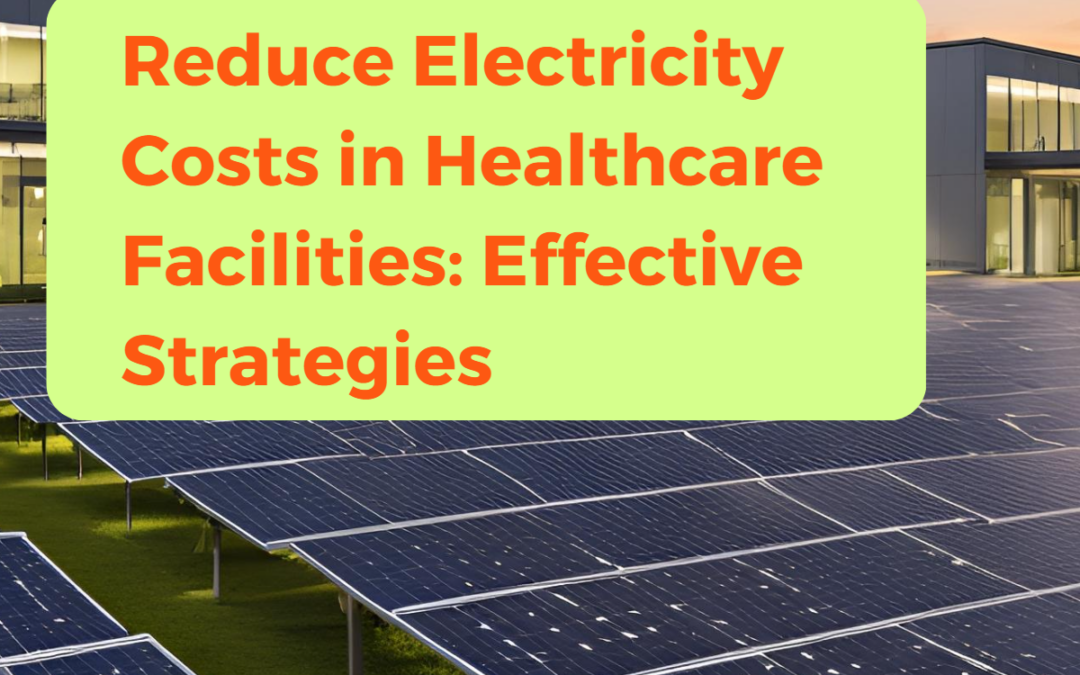Introduction
In the ever-demanding healthcare industry, the need to reduce electricity costs in healthcare facilities without compromising patient care is crucial. Electricity consumption represents a substantial portion of operational expenses, but with a few straightforward and effective strategies, healthcare facilities can significantly lower their bills. This blog post explores practical tips to reduce electricity costs in healthcare facilities, covering immediate actions and long-term investments in renewable energy. We’ll also discuss how solar energy can be a game-changer, enhancing your cost-saving efforts while promoting sustainability.
Table of Contents:
1. Introduction
2. Energy Audits: Identifying Savings Opportunities
3. Efficient Lighting Solutions
4. Optimizing HVAC Systems
5. Investing in Solar Energy
6. Smart Energy Management Systems
7. FAQs
8. Summary
Energy Audits: Identifying Savings Opportunities

To begin with, understanding where and how energy is being used is essential. Conducting an energy audit can help identify areas where energy is being wasted and where improvements can be made. Therefore, consider hiring a professional energy auditor to get a detailed assessment. This first step can reveal hidden inefficiencies and pave the way for significant savings on your journey to reduce electricity costs in healthcare facility.
Efficient Lighting Solutions

Lighting is a major contributor to electricity consumption in healthcare facilities. By switching to LED lighting, you can achieve significant savings. LEDs use up to 75% less energy and last 25 times longer than incandescent lighting. Additionally, implementing motion sensors and daylight harvesting systems can further reduce energy usage, making your facility more efficient and cost-effective.
Optimizing HVAC Systems
Heating, ventilation, and air conditioning (HVAC) systems are critical for maintaining a comfortable environment in healthcare settings. However, they can be energy-intensive. Regular maintenance, upgrading to energy-efficient models, and using programmable thermostats can help optimize HVAC performance and reduce costs. As a result, your facility can maintain a comfortable environment while saving on electricity expenses.
Investing in Solar Energy

Solar energy presents a substantial opportunity for healthcare facilities to reduce electricity costs. Installing solar panels can significantly cut down on electricity bills by generating your own renewable energy. Moreover, you can opt for a Pay-As-You-Go financing by Access Care Energy without paying a high upfront cost. Get solar installed now with a small down payment and pay as you go monthly, complete your payment plan and enjoy free solar energy.
Smart Energy Management Systems
Implementing smart energy management systems can help monitor and control energy usage more effectively. These systems provide real-time data on energy consumption, allowing facilities to identify inefficiencies and make informed decisions. Automation features can also adjust energy usage based on occupancy and usage patterns, further enhancing savings.
FAQs
Q1: How much can switching to LED lighting save on electricity costs? Switching to LED lighting can save up to 75% on lighting costs and also reduce maintenance costs due to their longer lifespan.
Q2: What are the benefits of conducting an energy audit? An energy audit helps identify areas of energy wastage and provides a roadmap for improvements, potentially leading to significant cost savings and enhanced operational efficiency.
Q3: Is solar energy a reliable option for healthcare facilities? Yes, solar energy is a reliable and sustainable option. With advances in solar technology and storage solutions, healthcare facilities can benefit from consistent energy supply and reduced dependency on the grid.
Q4: How can I get started with the Pay-As-you-go financing option? M
To get started, get in touch with us, Our experienced Field Team is ready to help you find the right solution and walk you through the pay-as-you-go process. Contact us here contact us link
Summary
Reducing electricity costs in healthcare facilities involves a combination of immediate actions and long-term investments. By conducting energy audits, adopting efficient lighting solutions, optimizing HVAC systems, and investing in solar power, healthcare facilities can achieve substantial savings. Implementing smart energy management systems adds another layer of efficiency, ensuring the most effective use of energy. Focusing on these strategies allows healthcare facilities to significantly improve their bottom line while fostering a sustainable and reliable healthcare environment.
References

